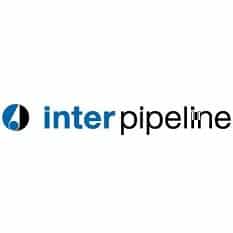Is InterPipeline (TSE:IPL) Stock a Buy Despite a Dividend Cut?

One of the main reasons investors flock to buy Canadian stocks in the midstream industry is for stable and reliable dividend stocks. A point of focus in this industry are companies that operate pipelines, which tend to provide investors with higher-than-average yields backed by strong cash flows.
There are times however, when a company takes on more than it can handle. This can be in the form of an acquisition, or a big capital project. This can lead to pressures on cash flows and at worst a cut to the dividend.
A big dividend cut
A perfect example of this is Inter Pipeline (TSX:IPL). Inter is undertaking the largest project in its history, the Heartland Petrochemical Complex (HPC) – a first of its kind in Canada. Although the company was delivering the project on time and on budget, it had little wiggle room in order to sustain its dividend.
Prior to the cut, the company planned on the sale of non-core assets and forecasted cash flows to carry it through Fiscal 2021. Unfortunately, the sale of these assets was delayed, and the pandemic hit which impacted cash flows.
Compounding the issue? Heartland costs were revised upwards to $4.0B from $3.5B previously, a 16.67% increase. As the pandemic raged, Inter Pipeline had no choice and it announced a 72% cut to the dividend.
Anyone buying into the company for the income when it was yielding north of 15% was taking considerable risk. That simply wasn’t sustainable. The most disappointing aspect? Inter Pipeline was a Canadian Dividend All Star with an 11-year dividend growth streak.
Market Cap: $5.60 billionForward P/E: 20.56Yield: 3.55%Dividend Growth Streak: 0 yearsPayout Ratio (Earnings): 69.56%Payout Ratio (Free Cash Flows): Premium Members OnlyPayout Ratio (Operating Cash Flows): Premium Members Only1 Yr Div Growth Rate: -71.90%5 Yr Div Growth Rate: Premium Members OnlyStocktrades Growth Score: Premium Members OnlyStocktrades Dividend Safety Score: Premium Members Only
High CAPEX requirements
Where do investors go from here? For starters, Inter Pipeline is still expected to reap significant benefits from Heartland. As of end of Q3, the project is about 72% complete and the projected CAPEX in Fiscal 2021 is expected to be approximately $800M.
This is still a pretty significant cash outlay for a smaller cap pipeline. It is therefore not surprising that the company is “exploring partnership for a material interest in HPC”. This would allow them to reduce future funding requirements and improve its financial ratios.
Bottom line, the company remains in a stretched financial position. In 2019, the company was the subject of takeover rumors as astute investors smelled blood in the water. Management and the board quickly rebuffed those attempts. Inter Pipeline remained steadfast in its ability to deliver HPC on its own. Turns own those potential acquirers were on to something.
HPC is still a flagship project and is expected to enter operations by early 2022 – a few months behind the original plan. The project is expected to be underpinned by 70-85% long-term costs of service contracts. Once fully operational, HPC is expected to generate $450-500 million in average EBTIDA per year.
To put this into perspective, IPL is expected to exit 2020 with adjusted EBITDA of $800M at the high range. There is no doubt that HPC is a transformational project for a company the size of Inter Pipeline.
There is, however, a caveat. If the company brings on a partner, which is looking increasingly likely, HPCs contribution to Inter Pipeline’s EBITDA will be impacted. To what extent will depend on what kind of deal is struck.
As of writing, Inter Pipeline is yielding 3.55% which is well below historical averages but still quite respectable. If however, investors are looking for stable and reliable dividend growth – it may be best to look elsewhere.
There remains plenty of uncertainty around Heartland and until the complex is fully operational, the dividend is likely to remain stagnant.
